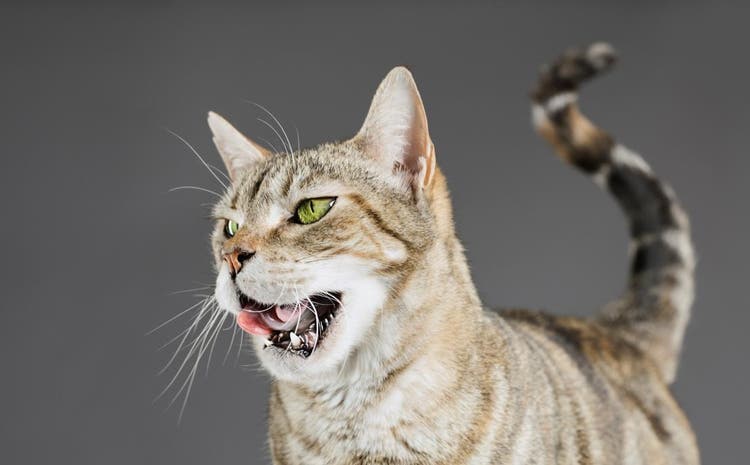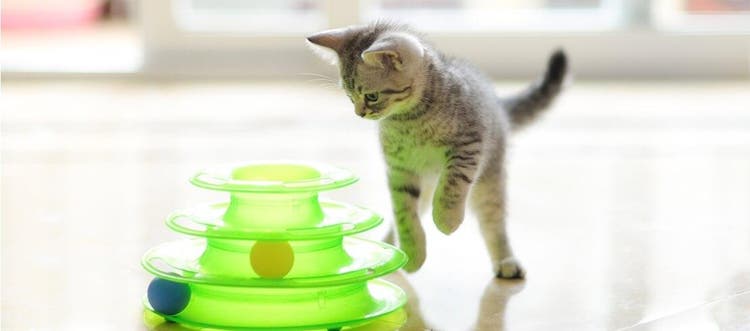Training a cat to use a litter box doesn’t have to be difficult or messy.
Bringing home, a new kitten or cat is an exciting time. You’ll be eager to start playing with your new friend, but first things first. Litter training is an important first step to ensuring your cat feels comfortable in their new home. Here are five ways to make the process stress-free for everyone involved.
1. Choose the right cat litter box
All cats will instinctively seek out sandy places to do their business, but you can still take a few proactive steps to encourage them to use their litter box. According to cat behaviour experts, most owners buy litter boxes that are too small for their cat. A good rule of thumb when selecting a litter box for your cat is to choose one that’s at least one-and-a-half times the cat’s length. Remember if you are adopting a kitten, that your pet will grow into a full-sized cat soon enough, and the litterbox will need to accommodate their new size.
The style of litter box you use can also affect your success with litter training. Senior cats often have conditions such as arthritis that could make getting into a high-sided litter box more challenging, so consider swapping these for lower-lipped versions. Some cats may be nervous using a hooded or covered litter box. If your cat is struggling with litter training, the solution may be as simple as choosing a different style of litter box.
2. Choose the right litter
Experiment with different types of litter to see which suits you and your cat the best. Ask the shelter or breeder where you adopted your cat what kind of litter your new friend was used to. Cats don’t like big changes – and they’re already going through enough trying to adapt to their new home! It may be best to stick with the type of litter they were used to before, and gradually change it, if need be.
The two main types of cat litter are:
- Clumping litter forms clumps when exposed to moisture. This makes cleaning the litter box quick and easy. All you have to do is remove the clumps and add a little more litter. Clumping litter is often made from absorbable clay which can be dusty and isn’t biodegradable, but you can also purchase dust-free, biodegradable alternatives made from plant fiber.
- Non-clumping litter is made from many different materials, including crystals of dried silica. A more expensive litter, it tends to last for a long time and is dust-free and can be biodegradable. Other non-clumping litters made of biodegradable recycled paper or pine wood pellets are absorbent and dust-free but will need to be cleaned out more regularly.
3. Consider the location of the litter box
Where you place the litter box is just as important as the size of the litter box and the type of litter you use. The litter box should be placed somewhere quiet, accessible and in a different location from your cat’s food dish. Show your new cat where the litter box is soon after their arrival and reward them after they use it for the first time.
If you have a kitten, gently encourage them to use the litter box by placing them in it at various times throughout the day, such as first thing in the morning and after meals. Like humans, cats prefer privacy when doing their business, so don’t linger while they use their litter box. You can check to see if your cat has gone in the litter box once you have given them enough time to use it.
4. Clean the litter box regularly to encourage reuse
Cats are clean animals, and they may eventually stop using a litter box that isn’t cleaned. Make it your routine to scoop out the clumps of litter once every day. On a weekly basis, throw away all of the litter, clean the litter box with a mild disinfectant, rinse it thoroughly and replace the litter.
5. Provide enough litter boxes
Most experts agree that you should have one litter box for each cat in the household, plus one extra, just in case.
Senior cats may find getting to their litter box more difficult, so add a few more around your home to ensure they don’t have to travel far to reach one.
What to do if your cat won’t use the litter box
If your cat is struggling to use the litter box consistently, or if they suddenly stop using it, follow these tips:
- No matter your cat’s age, if they suddenly stop using the litter box and start eliminating around the house, it’s important to book an appointment with your veterinarian as soon as possible to rule out any underlying medical issues. Urinary tract infections (UTIs), feline interstitial cystitis and bladder stones can cause painful urination and could discourage your cat from going properly. Some of these conditions can be very serious, so do not hesitate to bring them in to get checked out.
- If you have multiple cats, make sure other cats in the household aren’t preventing the new cat from using one or more of the litter boxes. Having the right number of litter boxes in the house could help solve this problem.
- Check the litter level in each box. Most cats prefer a shallow amount of litter, no more than 5 cm deep.
- If your cat is particularly picky, consider getting a self-cleaning litter box.
Your new cat may have a few accidents, particularly when young, but gentle persistence and keeping the litter box clean should have them trained in no time.









